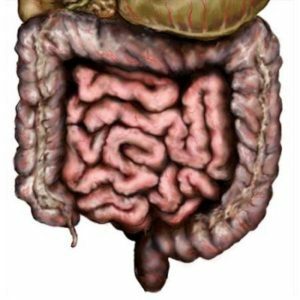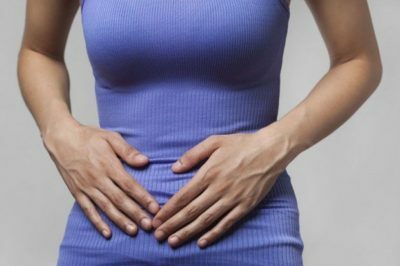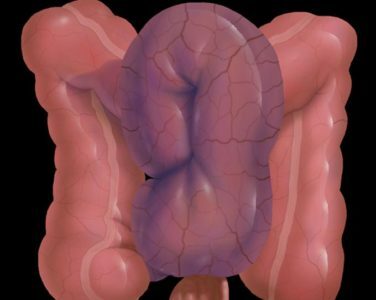1 Etiology of the disease
The causes of the onset of intestinal pneumatosis are often associated with a disease that causes this pathological condition to develop.
Do you have gastritis?
GALINA SAVINA: "How easy is it to cure gastritis at home for 1 month. A proven method - write down a recipe. ..!"Read more & gt; & gt;

Recommended to consult
- Symptoms and treatment of intestinal colitis
- Colon inflammation: symptoms and treatment
- Symptoms and treatment of small intestine diseases
- Effective agent for gastritis and gastric ulcer
Gastric pneumonia occurs when normal absorption of gases in this organ is impaired. With a healthy functioning of the stomach, gases pass directly into the bloodstream, and are then removed or distributed throughout the body. With pneumatosis, they form large cavities that are filled with this gas. They significantly disrupt the work of the gastrointestinal tract.
Since gastric pneumonia is associated with the formation of gas cavities, it is necessary to consider the causes of their appearance:
- In childhood, pneumatosis can be formed quite often. The impetus to the development of pathology is eating disorder or severe food poisoning.
- Disturbance of intestinal motility. Usually, such a pathology occurs after surgery in the abdominal cavity or due to the development of the disease of the gastrointestinal tract.
- Infectious diseases of various parts of the thick and small intestine with the formation of large quantities of pathogenic bacterial microflora.
- Disruption of the removal of gases from the cavity of the gastrointestinal tract due to complete or partial obstruction of the small and large intestine for various reasons, due to the squeezing of various areas of the gut due to the presence of adhesions, due to trauma or formation of a hernia, due to the presence of malignanta tumor or polyps in the rectum and anus.
A large number of various diseases of the gastrointestinal tract and, in the first place, colitis can lead to a disturbance in the normal release of gases. The accumulation of a large number of gases in the walls of the intestine can indicate the development of appendicitis.

2 Signs of the pathology of
Symptoms of intestinal pneumatosis manifest themselves differently depending on the age and condition of the patient. Most often they are combined with signs of other diseases that cause the appearance of pathology. Symptoms, treatment and causes of the disease are closely related.
-
 IMPORTANT TO KNOW! Gastritis? Ulcer? To have a stomach ulcer not turned into cancer, drink a glass. ..Read the article & gt; & gt;
IMPORTANT TO KNOW! Gastritis? Ulcer? To have a stomach ulcer not turned into cancer, drink a glass. ..Read the article & gt; & gt;
When a condition occurs, gases fill the intestinal walls, symptoms are primarily associated with this. A person has a feeling of heaviness and fullness of the intestine. These feelings directly depend on the number of cysts and their size. The pronounced pneumatosis of the intestine can occupy almost the entire organ, in another case the cysts appear only in limited areas of the intestine.

Most often, gas bags form in the ileum. Here they resemble bunches of grapes. Quite rare is one cyst, in the near future a few more air bubbles form near it.
Intestinal pneumonia is an insufficiently studied pathological condition of the gastrointestinal tract. Specific symptoms that would be characteristic only for this condition are not, therefore pneumatosis can be confused with another disease or misdiagnosed.
There are a number of symptoms that accompany this condition:
- Increased gas production. Gases that are in the walls of the intestine begin to interfere with the normal operation of the gastrointestinal tract. Air bags interfere with patency and provoke the accumulation of gases in the intestine.
- Colicky pain. They arise against the background of accumulation of a large number of gases and the expansion of the intestine. Depending on the pathology, the pain may be paroxysmal or permanent.
- Violation of defecation and constipation. This is also associated with the expansion of the intestine and the closure of the lumen of the large intestine. Fecal masses hardly move to the anus, which brings a lot of inconveniences and unpleasant sensations to a person.
- Increased pneumatization of the intestine can lead to serious disruption of the bowels, including obstruction.
-
 Gastroenterologist. IMPORTANT: "I beg you, if you began to worry about abdominal pain, heartburn, nausea, do not in any way do gases. .."Read more & gt; & gt;
Gastroenterologist. IMPORTANT: "I beg you, if you began to worry about abdominal pain, heartburn, nausea, do not in any way do gases. .."Read more & gt; & gt;
When pneumatosis occurs, there may be signs that are similar to other diseases of the digestive system:
- nausea with bouts of vomiting;
- heaviness in the stomach;
- bloating in places of air bag localization;
- feeling of heaviness in the abdomen;
- frequent burp with lots of air.
With intestinal pneumatosis, there are signs of a disease that indicate a general malaise of the body. Disturbance of digestion leads to the fact that a person has weakness, skin covers lose their healthy pink color and become bluish.
In case of serious complications, when air sacs increase very much and break, peritonitis may occur. This condition is characterized by a sharp pain in the abdomen, a sudden drop in pressure and deterioration of the patient's well-being. In the absence of medical care, a person may experience shock and loss of consciousness.
ADVICE FROM THE MAIN GASTROENTEROLOGIST
Korotov SV: "I can recommend only one remedy for the rapid treatment of Ulcer and Gastritis, which is now recommended by the Ministry of Health. .." Read testimonials & gt; & gt;
3 Diagnostic measures
Diagnosis of this pathological condition occurs most often in the diagnosis of another disorder or disease of the gastrointestinal tract.

The doctor can determine the presence of vesicles already when examining and palpating the patient's abdomen. This is possible only if there are large areas of intestinal wall lesions. During this procedure, the patient can feel the small bubbles of gas bursting inside his stomach.
A similar examination is not sufficient to establish an accurate diagnosis. To do this, at the first stage of the examination of the patient, radiography is performed. Such a diagnosis allows you to find in which place of the intestine the accumulation of air bubbles is observed, and to determine the approximate number of cysts.
With further examination, the patient must undergo colonoscopy. With the help of a special device that is placed in the intestinal cavity, the physician can visually examine and assess the condition of the cysts, the state of other areas of the intestine.
Visual internal examination of the intestine allows the gastroenterologist to study its walls in more detail, exclude their perforation and some other diseases that have a similar symptomatology. For a more accurate laboratory examination, the patient takes tissues of the damaged intestine for a biopsy.
WE RECOMMEND!
For prevention and treatment of gastrointestinal diseases our readers advise Monastic tea. This unique remedy consists of 9 medicinal herbs useful for digestion, which not only complement, but also enhance each other's actions. Monastic tea will not only eliminate all symptoms of the gastrointestinal tract and digestive system, but will also permanently eliminate the cause of its occurrence.
The opinion of doctors. .. »

Pneumatization of the intestine can damage not only the gastrointestinal tract, but the whole body, therefore it is recommended to undergo an additional blood test for biochemistry and hemoglobin.
4 Therapeutic methods
Most often pneumatosis is a symptom or complication of another disease of the gastrointestinal tract, so it can be cured only by curing the underlying disease.
But with increased pneumotization of the intestine, treatment should be directed specifically at fighting in air bags, a large number and size of which pose a significant threat to health and even human life.

Symptomatic treatment of intestinal pneumatosis includes:
- the use of various laxatives that fight constipation and help remove excess gases from the body;
- use of drugs that help improve intestinal motility;
- if a patient with intestinal pneumatosis is accompanied by diarrhea, it is necessary to use fixing substances and adhere to a certain diet;
- with abdominal pain will help to cope with any drugs based on drotaverine, for example, No-shpa.
- in case of severe intestinal pneumatosis, a number of antiviral and antimicrobial agents may be used.
There are a number of methods of traditional medicine that help cope with increased gas production and reduce the number of air cysts on the walls of the intestine. For this, the fruits of mountain ash and the roots of valerian are used.
To reduce colic and cramping pain, you can use a decoction or alcohol tincture of peppermint leaves. They improve intestinal motility.
To cope with the disturbances of gas formation, folk recipes based on fennel seeds, parsley and dill greens, anise and flax seeds will help. It is best to take infusions in the morning on an empty stomach for half an hour before eating.
A mandatory diet for the treatment of intestinal pneumonia. To eat food is recommended at least 5-6 times a day in small portions. From the diet it is necessary to remove all foods and dishes that provoke the appearance of constipation or increased gas formation.
With pneumatosis it is recommended to use beets and beet juice, a large number of different nuts and cereals, fresh fruit with a significant amount of fiber( except for green apples and pears, as well as grapes).Under strict prohibition are peas and cabbage, any fizzy drinks, alcohol and fried foods. Low-fat meat, soups and dairy products can be consumed in unlimited quantities.
- 1 Etiology of the disease
- 2 Signs of the pathology
- 3 Diagnostic measures
- 4 Treatment methods
Intestinal pneumonia, the symptoms, treatment, causes and diagnostics of which will be described below, is a common pathology.
It is not a disease, but a state of the walls of the intestine and stomach, in which specific bubbles containing gas form on their surface.
Pneumatosis of the gastrointestinal tract is not considered a separate pathology, but often indicates the development of other diseases, for example, colitis or enterocolitis.



